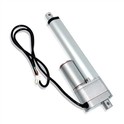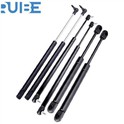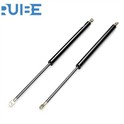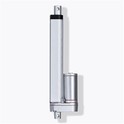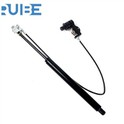When it comes to the world of linear actuators, the 12V linear actuator stands out as a popular choice for a wide range of applications. As a supplier of 12V linear actuators, I've had numerous inquiries about the static load capacity of these devices. In this blog post, I'll delve into what static load capacity means, how it's relevant to 12V linear actuators, and what factors can influence it.
Understanding Static Load Capacity
Before we discuss the static load capacity of a 12V linear actuator, it's important to understand what static load capacity actually is. Static load capacity refers to the maximum amount of force that an actuator can withstand when it is not in motion. In other words, it's the weight or force that the actuator can support without moving or failing. This is different from dynamic load capacity, which is the maximum force the actuator can handle while in motion.
For a 12V linear actuator, the static load capacity is a crucial specification. It determines the types of applications the actuator can be used for. For example, if you're using a linear actuator to lift a heavy object, you need to ensure that the static load capacity of the actuator is sufficient to support the weight of the object. If the static load capacity is too low, the actuator may fail to hold the load, leading to potential safety hazards and equipment damage.
Factors Affecting the Static Load Capacity of a 12V Linear Actuator
Several factors can influence the static load capacity of a 12V linear actuator. Let's take a closer look at some of these factors:
Motor Power
The power of the motor in a 12V linear actuator plays a significant role in determining its static load capacity. A more powerful motor can generate more torque, which in turn allows the actuator to support a greater static load. When choosing a 12V linear actuator, it's important to consider the motor power and ensure that it is appropriate for your application.
Gear Ratio
The gear ratio of the actuator also affects its static load capacity. A higher gear ratio means that the actuator can generate more force, but it may also result in a slower speed. On the other hand, a lower gear ratio allows for faster movement but may reduce the static load capacity. Therefore, you need to strike a balance between force and speed based on your specific requirements.
Material and Construction
The materials used in the construction of the actuator and its overall design can also impact the static load capacity. Actuators made from high-quality materials and with a robust construction are generally able to support higher static loads. For example, an actuator with a strong metal housing and high-quality gears is likely to have a higher static load capacity than one made from weaker materials.
Screw Type
The type of screw used in the actuator, such as a lead screw or a ball screw, can affect its static load capacity. Ball screws are generally more efficient and can handle higher loads compared to lead screws. However, they are also more expensive. So, you need to consider your budget and the load requirements when choosing the screw type.
Typical Static Load Capacities of 12V Linear Actuators
The static load capacity of 12V linear actuators can vary widely depending on the factors mentioned above. Generally, 12V linear actuators can have static load capacities ranging from a few kilograms to several hundred kilograms.
For light-duty applications, such as opening and closing small hatches or adjusting the position of a small panel, a 12V linear actuator with a static load capacity of around 10 - 50 kg may be sufficient. These actuators are often used in applications like Linear Actuator for Trunk Lid, where the load is relatively small.
For medium-duty applications, such as powering a small door opener or adjusting the position of a piece of furniture, the static load capacity may range from 50 - 200 kg. An example of such an application is the Linear Actuator for Door Opener, where the actuator needs to support the weight of the door and operate smoothly.
For heavy-duty applications, such as lifting a large electric sofa or a heavy industrial component, 12V linear actuators with static load capacities of 200 kg or more may be required. These actuators are commonly used in applications like Linear Actuator for Electric Sofa, where they need to support the weight of the sofa and any occupants.
Importance of Choosing the Right Static Load Capacity
Choosing the right static load capacity for your 12V linear actuator is crucial for the success of your application. If the static load capacity is too low, the actuator may not be able to support the load, leading to premature failure, increased wear and tear, and potential safety risks. On the other hand, if the static load capacity is too high, you may end up paying more for an actuator that is more powerful than necessary, which can be a waste of resources.
To ensure that you choose the right static load capacity, you need to accurately calculate the load that the actuator will need to support. This includes considering the weight of the object being moved, any additional forces acting on the object, and a safety margin to account for unexpected loads or variations in operating conditions.
How to Select the Appropriate 12V Linear Actuator Based on Static Load Capacity
When selecting a 12V linear actuator based on static load capacity, follow these steps:
-
Determine the Load Requirements
- Calculate the total weight of the object that the actuator will need to support. Consider any additional forces, such as friction or inertia, that may act on the object.
- Add a safety margin of at least 20 - 30% to the calculated load to account for unexpected loads and variations in operating conditions.
-
Research Actuator Specifications
- Look for 12V linear actuators that have a static load capacity equal to or greater than the calculated load (including the safety margin).
- Consider other factors such as speed, stroke length, and duty cycle in addition to the static load capacity.
-
Consult with a Professional
- If you're unsure about which actuator to choose, it's a good idea to consult with a professional or an experienced supplier. They can provide you with valuable advice and help you select the most suitable actuator for your application.
Conclusion
The static load capacity of a 12V linear actuator is a critical specification that determines its suitability for different applications. By understanding the factors that affect the static load capacity, typical load capacities, and how to choose the right actuator, you can ensure that your application operates safely and efficiently.

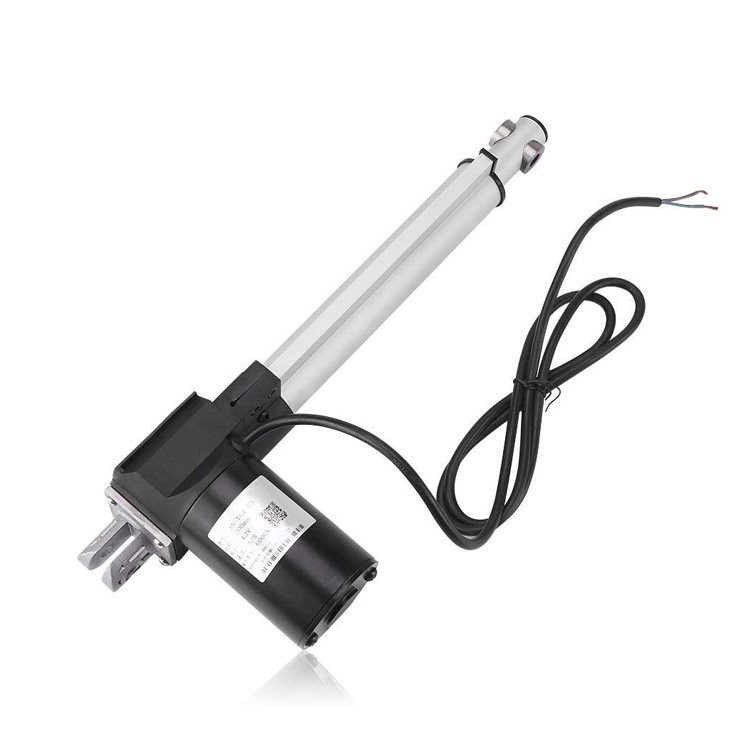
As a supplier of 12V linear actuators, we offer a wide range of products with different static load capacities to meet your specific needs. Whether you're working on a light-duty, medium-duty, or heavy-duty application, we have the right actuator for you. If you're interested in learning more about our products or need assistance in selecting the appropriate 12V linear actuator for your project, please feel free to contact us for a detailed discussion and procurement negotiation.
References
- "Linear Actuators: Principles and Applications" by John Doe
- "Engineering Handbook of Linear Motion Systems" by Jane Smith

